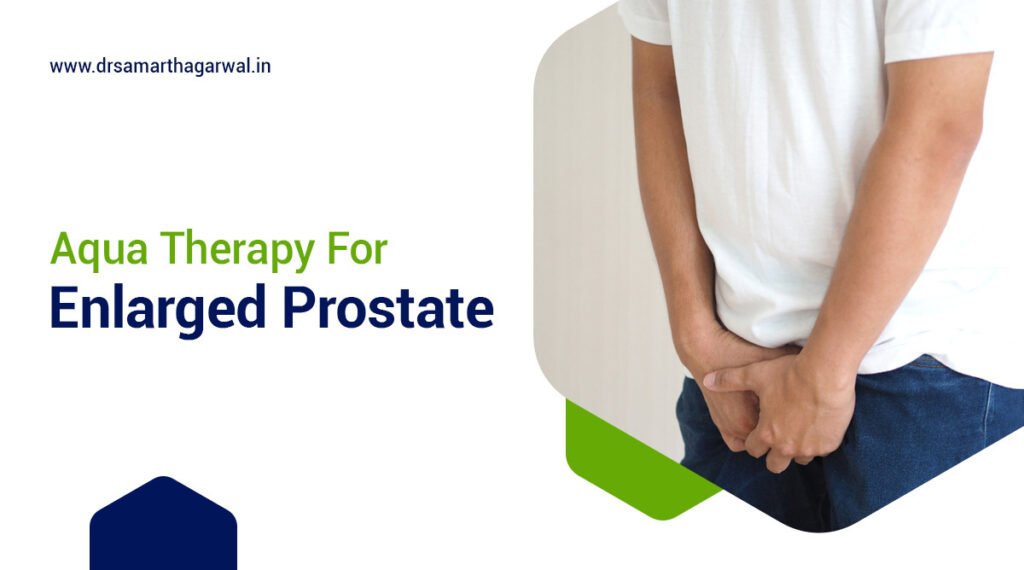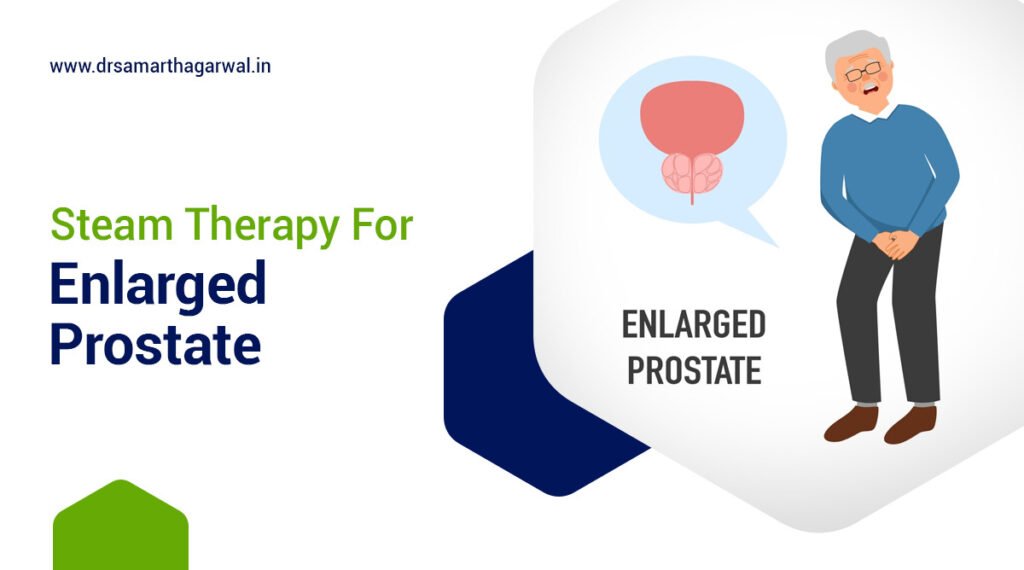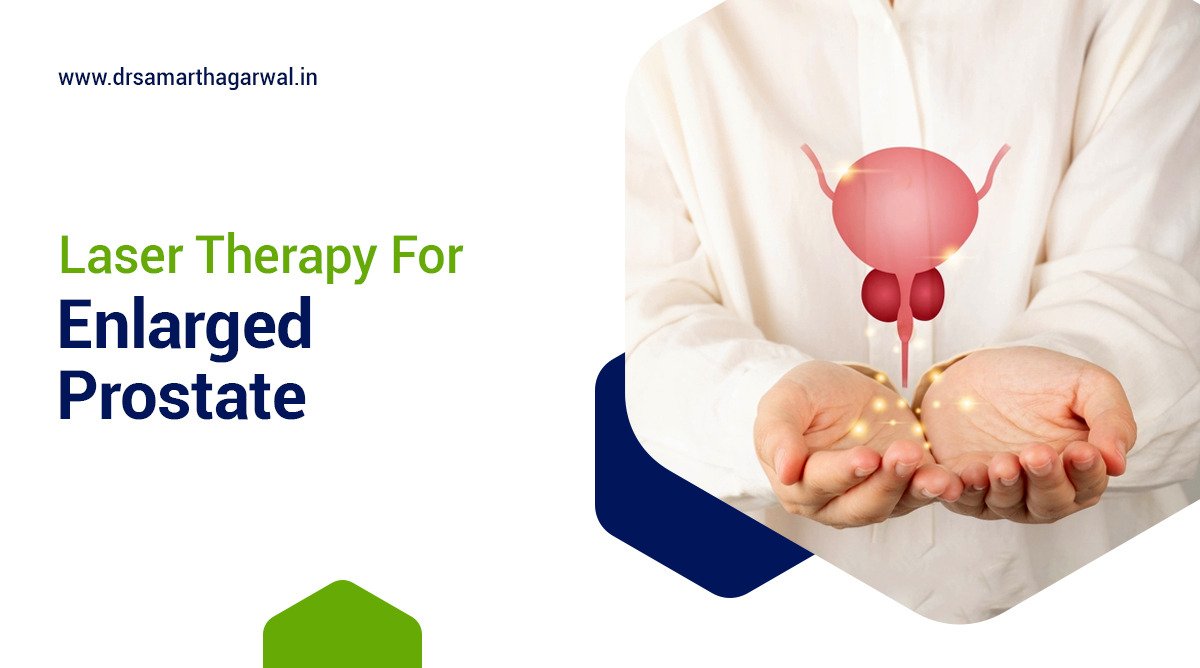Laser therapy is a minimally invasive treatment option for an enlarged prostate, also known as benign prostatic hyperplasia (BPH). It involves using laser energy to remove excess prostate tissue, reducing symptoms and improving urinary function. This treatment has gained popularity in recent years due to its effectiveness and minimal side effects.
The symptoms of an enlarged prostate include frequent urination, weak urine flow, and difficulty starting to urinate. The causes of BPH are not fully understood, but factors such as age, genetics, and hormonal changes are thought to contribute to its development. Left untreated, BPH can lead to complications such as urinary tract infections, bladder stones, and kidney damage.
Laser therapy offers several benefits, including reduced bleeding risk, shorter hospital stays, and quicker recovery times compared to traditional surgical methods. According to a 1999 study published in a journal by R Muschter, interstitial laser coagulation of BPH syndrome has been shown to be effective in improving symptoms and reducing prostate volume.
Is Laser Surgery Good for Prostate?
Prostate laser surgery improves urinary flow for most men, and results are often long-lasting. Sometimes, the laser surgery doesn’t remove all of the prostate tissue blocking urine flow.
Prostate laser surgery aims to alleviate bothersome urinary problems caused by an enlarged prostate, scientifically referred to as benign prostatic hyperplasia (BPH).
The surgery involves inserting a scope through the tip of the penis into the urethra, and a laser is used to shrink or remove excess tissue from the prostate that is preventing urine.
Prostate laser surgery helps reduce urinary caused by BPH, including frequent urination difficulty starting urination, slow urination, and the need to urinate frequently. Laser surgery might also be done to treat or prevent complications due to blocked urine flow, such as kidney damage, urinary tract infections, and bladder stones.
The advantages of laser surgery over traditional surgery include lower risk of bleeding, shorter hospital stay, quicker recovery, and less need for a catheter. Risks of laser surgery can include temporary difficulty urinating, urinary tract infection, narrowing of the urethra dry orgasm, erectile dysfunction, and need for re-treatment.
What is GreenLight Laser Therapy?
GreenLight Laser Therapy is a minimally invasive procedure that uses laser technology to treat Benign Prostatic Hyperplasia (BPH).
GreenLight Laser Therapy is a definitive treatment for Benign Prostatic Hyperplasia (BPH), commonly known as enlargement of the prostate. This therapy utilizes laser technology to evaporate obstructing prostatic tissue, enhancing the flow of urine from the bladder. During the procedure, anesthesia is administered, and a telescope is inserted into the urethra up to the prostate level. A laser fiber is then guided through the scope, effectively and rapidly vaporizing the prostate tissue.
This treatment provides rapid relief of symptoms by BPH and offers a shorter hospital stay, less catheterization time, less bleeding, and a faster recovery than traditional surgical options. During the procedure, the doctor uses a laser to rapidly heat the excess prostate tissue, resulting in a channel for urine to pass through, restoring urine flow in patients.
Why choose GreenLight Laser Therapy?
Here are the key facts and benefits of GreenLight Laser Treatment for Prostatic Hyperplasia (B):
- Immediate relief of urinary symptoms: Patients experience relief of urinary symptoms almost instantly, and urine flow is typically restored soon after the procedure.
- Quick return to activities: GreenLight Laser Therapy allows for a quick return to normal, with most men returning to their normal routine in a few days.
- No loss: The GreenLight laser therapy is a bloodless procedure, which reduces the risk of complications.
- Long-lasting treatment: Laser Therapy is a long-lasting treatment for BPH, with many men experiencing relief in symptoms for several years.
- Risk of erectile dysfunction: The risk of erectile dysfunction is less than 1% with GreenLight Laser Therapy, which is significantly lower than with traditional surgery.
- Minimal period of catheterization: The catheter is typically removed within 24 hours of the procedure, which minimizes discomfort and promotes a faster recovery.
- Shorter hospital stay: GreenLight Laser Therapy is often performed as an outpatient procedure, and patients typically do not require an overnight hospital stay.
- Less bleeding: Compared to traditional surgery, GreenLight Laser Therapy is associated with less bleeding and a lower risk of bleeding complications.
- Faster recovery: The recovery time for GreenLight Laser Therapy is typically shorter than with traditional surgery, men to return to their normal activities more quickly.
- Covered by insurance: GreenLight Laser Therapy is covered by Medicare and most private insurance plans, making it a cost-effective treatment option for BPH.
What is HOLEP?
HoLEP is a minimally invasive surgical procedure that uses a laser to remove excess prostate tissue blocking urine flow in men with benign prostatic hyperplasia (BPH).
HoLEP, or Holmium Laser Enucleation of the Prostate, is a surgical procedure that treats urinary obstruction caused by an enlarged prostate. The procedure involves using a laser to remove the excess prostate tissue that is blocking urine flow. This minimally invasive surgery is an effective treatment for benign prostatic hyperplasia (BPH), a condition where the prostate gland becomes enlarged, leading to urinary symptoms.
During the HoLEP procedure, a laser is inserted through the urethra to remove the excess prostate tissue. This approach avoids the need for incisions and reduces the risk of complications compared to traditional surgery. The holmium laser used in HoLEP is effective in removing large amounts of prostate tissue, making it a suitable treatment for men with large prostates. The procedure is typically performed under general anesthesia and can be completed in about an hour.
The advantages of HoLEP include its safety, effectiveness, and quick recovery time. The procedure offers several benefits, including the removal of a large amount of prostate tissue without incisions, excellent results for treating large prostates, and a low risk of complications. HoLEP is a popular treatment option for men with BPH, as it provides rapid symptom relief and a quick return to normal activities.
Why Choose HOLEP?
For men suffering from benign prostatic hyperplasia (BPH), HoLEP (Holmium Laser Enucleation of the Prostate) is a minimally invasive surgical treatment that offers a range of benefits over surgical methods. By removing blockages and preserving tissue, HoLEP provides a long-term for an enlarged prostate, reducing symptoms such as painful urination and improving urine flow. Here are 12 reasons why HoLEP may be the best choice for treating BPH.
- Effective Treatment for BPH: HoLEP is a type of laser surgery that treats benign prostatic hyperplasia (BPH), a condition that causes the prostate to get larger (enlarged prostate).
- Removes Blockages: HoLEP surgery removes blockages that prevent urine from flowing properly, treating painful urination and other symptoms.
- Minimally Invasive: HoLEP involves no incisions and little downtime, making it a minimally invasive procedure.
- No Blood Transfusions: HoLEP is less likely to require a blood transfusion or additional surgery in the future because the prostate grows back.
- Long-Term Solution: Holmium laser enucleation of the prostate (HoLEP) offers a definitive treatment for benign prostatic hyperplasia (BPH), an enlarged prostate.
- Faster Recovery: HoLEP offers faster recovery and symptom relief compared with traditional prostate surgery.
- Less Risk of Complications: HoLEP carries fewer risks and complications compared to other surgical treatments for BPH.
- Treats Large Prostates: HoLEP can be used to treat any size prostate but has its greatest advantage when used to treat men with very large prostates.
- Preserve Removed Tissue: Holmium Laser Enucleation of the Prostate (HoLEP) retains removed tissue for laboratory examination, enabling assessment for various conditions, such as prostate cancer.
- Gold Standard for Surgical Management: HoLEP is considered the gold standard for the surgical management of benign prostatic hyperplasia (BPH) according to numerous large, randomized controlled trials (RCTs).
- Objective Superiority: HoLEP has been demonstrated to be objectively superior to other surgical therapies for BPH.
- Improved Urine Flow: HoLEP improves urine flow and reduces symptoms of BPH, such as painful urination, frequent urination, and difficulty starting to pee.
You might also like: What Are Male Urinary Incontinence Treatment Options?
What Is the Difference Between HOLEP and Green Light Surgery for BPH?
HOLEP (Holmium Laser Enucleation of the Prostate) and GreenLight Laser surgery are two surgical techniques used to treat Benign Prostatic Hyperplasia (BPH), a condition characterized by an enlarged prostate. While both procedures aim to relieve urinary symptoms, they differ in their techniques, laser technology, and outcomes.
The table below compares the key differences between HOLEP and GreenLight Laser surgery for Benign Prostatic Hyperplasia (BPH).
| HOLEP | GreenLight Laser |
| Involves the removal of prostate tissue to relieve obstruction | Ablates prostate tissue using vaporization |
| More effective in treating urinary retention, with 98% of men freed from catheter dependence | Less effective in treating retention, with 70% of men freed from catheter dependence |
| Has a higher improvement symptom score, with an of 70-80% | Has a lower improvement in symptom score compared to HOLEP |
| Has a shorter hospital stay and less blood loss compared to TUR | Has a similar hospital stay and blood loss compared to TURP |
| Suitable for with any size prostate | Limited to smaller prostates |
| Has been rigorously evaluated in 8 randomized trials | Has limited randomized trials compared to HOLEP |
| Has a higher success rate in men with larger prostates | Has a lower success rate in treating men with larger prostates |
You might also like : Aqua Therapy for Enlarged Prostate

What are The Prostate Laser Surgery Side Effects?
Prostate laser surgery is a minimally invasive procedure that can have various side effects, both short-term and long-term. While this is generally safe, it’s essential to be aware of the potential risks and complications that may arise.
Here are the detailed side effects of prostate laser surgery that you should know about:
Short-Term Side Effects ( Immediately After Surgery)
- Temporary burning and bleeding during urination: A common side effect that may last for a few weeks.
- Urinary frequency: Increased urination frequency after the surgery.
- Urinary incontinence: Patients may experience urinary leakage and loss of bladder control.
- Blood in urine: Noticeable blood in the urine is a possible side effect.
- Pain or discomfort: Mild pain or discomfort in the tract or pelvic area.
- Fever: Temporary fever may occur after surgery.
Long-term Side Effects
- Erectile dysfunction: A possible-term side effect, although rare
- Retrograde ejaculation: A condition where semen enters the bladder instead of being ejaculated out of the body.
- Urinary incontinence: In some cases, urinary incontinence may persist long-term.
- Urethral stricture: A rare complication where the urethra becomes narrowed or blocked.
- Dry orgasm: A possible long-term side effect where semen is not released during orgasm.
- Urinary tract infections: Recurrent UTIs may occur in some cases.
Rare Complications
1 Bleeding during the operation: A rare but possible complication during the surgery.
2. Prolonged hospital stay: In rare cases, the surgery may require a longer hospital stay.
Please note that not everyone will experience these side effects, and the likelihood of each side effect may vary based on individual circumstances. It is essential to discuss the potential risks and benefits with your urologist in Siliguri before undergoing prostate laser surgery.
What Is the Fastest Way to Shrink an Enlarged Prostate?
The fastest way to shrink an enlarged prostate is through a combination of natural remedies, lifestyle changes, and medical treatments. Kegel exercises, alpha-blockers, and laser therapy have been shown to be effective in reducing prostate swelling and improving urinary flow.
Can Blood Clots Appear After Green Light Laser Surgery?
Yes, blood clots can appear in the urine up to 8 weeks after surgery, and in some cases, up to 6 weeks after the procedure.
What Are the Common Prostate Greenlight Laser Surgery Side Effects?
Common side effects of GreenLight laser surgery for prostate enlargement include hematuria, bladder spasms or urgency, frequent urination, dysuria, retrograde ejaculation, temporary difficulty urinating, urinary tract infection, and sexual dysfunction.
What Is Laser Vaporization of Prostate Recovery Time?
The recovery time for laser vaporization of the prostate varies, but most patients are released in less than 24 hours and can return to daily activities in 2-3 days. Full recovery may take 4-6 weeks, but some patients may take up to 2 weeks to fully recover. Patients are typically catheter-free within 24 hours and can resume normal activities soon after.

You might also like: Steam Therapy for Enlarged Prostate
What Is the Prostate Laser Surgery Recovery Time at Home?
The recovery time at home after prostate laser surgery varies, but typically takes 2-4 weeks to fully recover, with most men resuming normal activities in 6-8 weeks.
What Is the Success Rate of Laser Therapy for Prostate
The success rate of day-case holmium laser enucleation of the prostate (HoLEP) significantly improved over time from 70% to 87% due to the surgeon’s experience.
According to Clément Klein et al’s 2021 study published in the Journal of Endourology, the success rate of day-case holmium laser enucleation of the prostate (HoLEP) significantly improved over time from 70% to 87% due to the surgeon’s experience. Prostate volume greater than 90 cc was associated with higher rates.
According to Clément Klein et al’s 2021 study published in the Journal of Endourology, the success rate of day-case holmium laser enucleation of the prostate (HoLEP) significantly improved over time from 70% to 87% due to the surgeon’s experience. Prostate volume greater than 90 cc was associated with higher rates.

If you are having the symptoms of an enlarged prostate then consult with Dr. Samarth Agarwal.
Dr. Samarth Agarwal, a native of Siliguri is a top choice of medical professional when it comes to Urologists in Siliguri.




